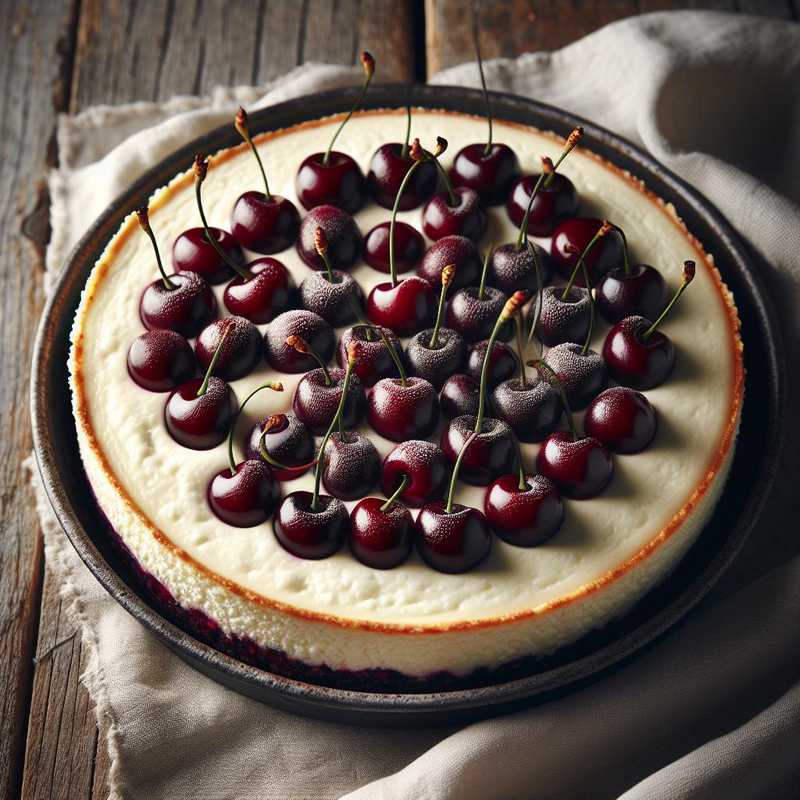Ricotta and Amarena Cheesecake
17/11/2023The ricotta and amarena cheesecake is a tasty variant of the classic American dessert, with an Italian twist provided by the fresh ricotta and the use of amarena cherries, which are syrup-soaked cherries typical of our local cuisine. Here is the recipe:
Ingredients
- 250 g of dry biscuits (such as Digestive or Oro Saiwa)
- 100 g of melted butter
- 500 g of ricotta cheese
- 200 ml of fresh cream
- 100 g of icing sugar
- 1 sachet of vanillin or the seeds from one vanilla pod
- 12 g of sheet gelatin (fish glue)
- Amarena cherries in syrup, to taste
Preparation
- Start by finely grinding the dry biscuits and mixing them with the melted butter until you obtain a homogeneous mixture.
- Line the bottom of a springform pan with parchment paper and press the biscuit mixture onto the bottom, forming a compact base. Allow it to harden in the refrigerator for about half an hour.
- In the meantime, soften the sheet gelatin in cold water for 10 minutes.
- In a large bowl, mix the ricotta with the icing sugar and vanillin (or vanilla seeds). Work the mixture until it is smooth and homogeneous.
- Drain the gelatin, squeeze out any excess water and dissolve it in a saucepan with a couple of tablespoons of water, being careful not to let it boil.
- Whip the fresh cream and gently fold it into the ricotta mixture.
- Also add the dissolved gelatin and mix gently with movements from the bottom up so as not to deflate the cream.
- Pour the ricotta and cream filling over the now-hardened biscuit base and level off the surface.
- Let the cheesecake firm up in the refrigerator for at least 4 hours, but ideally overnight.
- Before serving, decorate the top of the cheesecake with plentiful amarena cherries in syrup.
Fun Fact
The syrup-soaked amarena cherries are often associated with the town of Cantiano, in the province of Pesaro and Urbino, where they are cultivated and processed according to a traditional recipe.
I recommend pairing this cheesecake with a sweet and aromatic wine, like a Moscato d’Asti or a Passito di Pantelleria, to enhance the contrast between the creamy flavors of the dessert and the fizziness of the wine.
